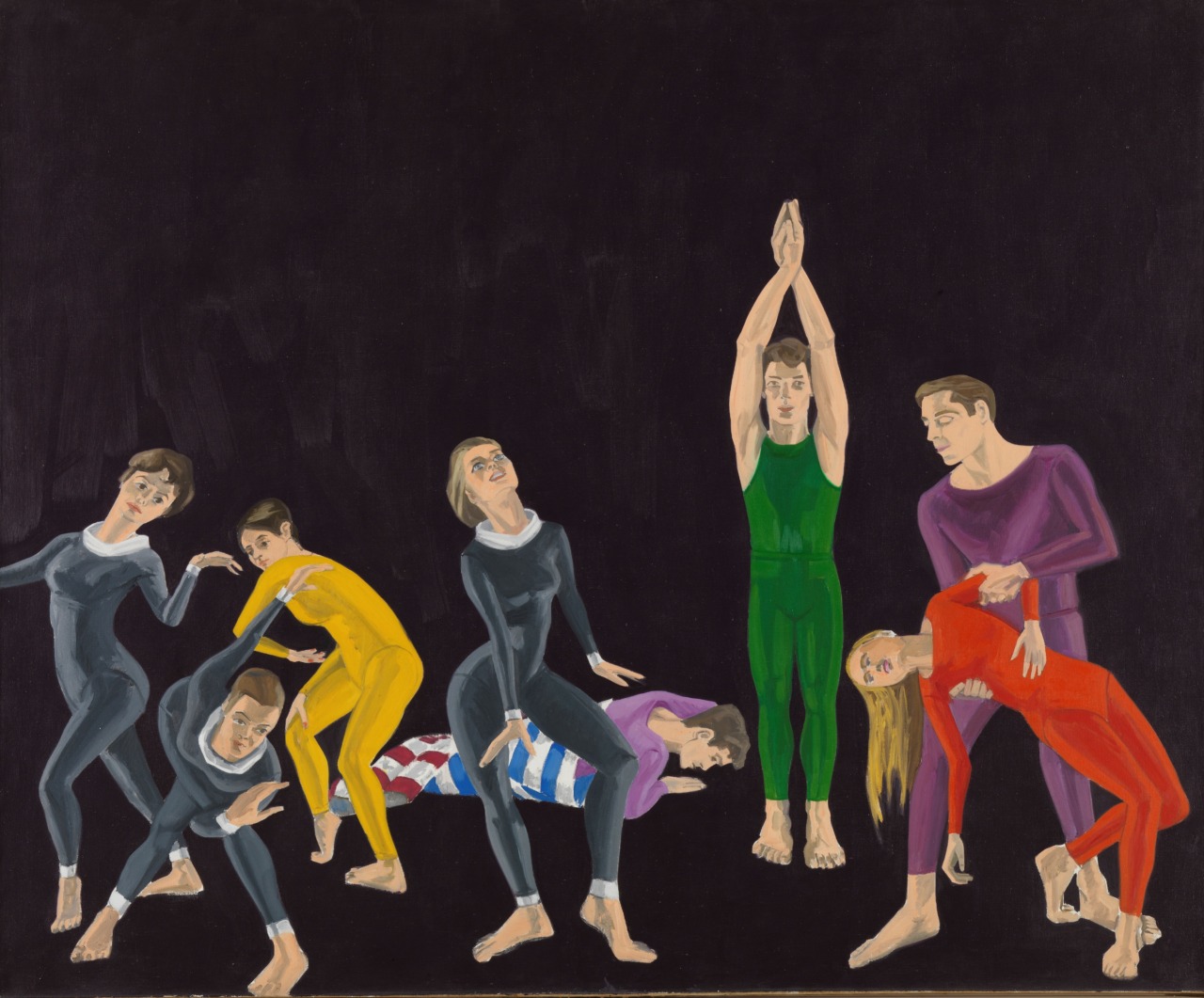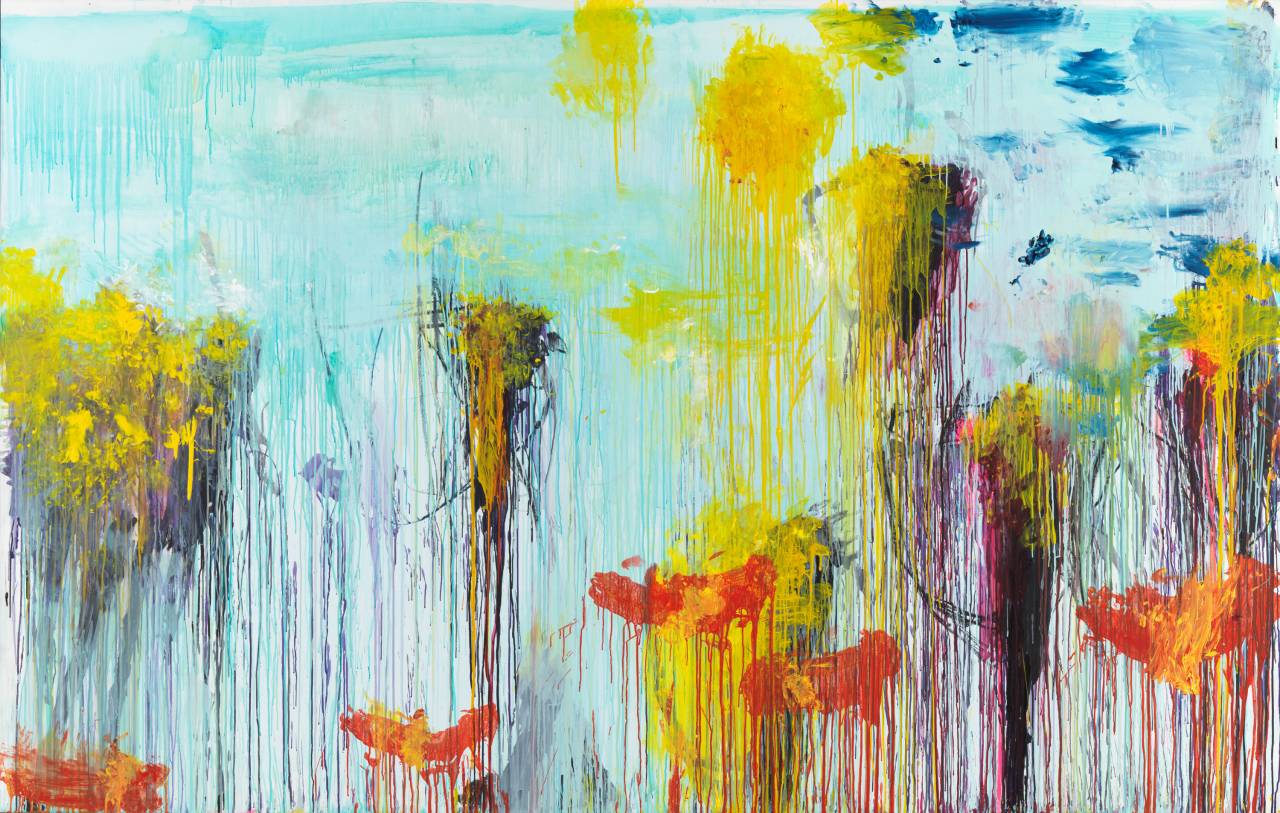Cy Twombly: In the Studio
Press Release for the Press Conference on May 31st, 2016 in Munich
Press release
Munich, May 27th, 2016 - With more than 200 works from various periods in his artistic career, the Brandhorst Collection provides a unique survey of Cy Twombly’s development as an artist. This retrospective selection of paintings, sculptures, drawings, and photographs spans an arch that reaches from the early 1950s right up to a picture from Twombly’s very last series of works, completed in 2011, shortly before his death. Featuring the diverse media in which Twombly worked, starting with the time of his studies at Black Mountain College, the show is able to bring surprising constellations between them to light.
Throughout his life, Twombly attributed central importance to the specific places in which his works were made. Especially in his photographs, Twombly frequently represents the creative process and the particular atmosphere that accompanied the creation of his paintings and sculptures. In his Interiors, Twombly takes his domestic spaces and elevates them to poetic sites of imagination where nature and culture, banality and refined taste meet. In keeping with this practice, the exhibition juxtaposes photographs with Twombly’s monumental roses that the artist arranged for the central gallery on the museum’s upper floor. The photographs reflect the context in which the paintings were made: intimate scenes from Twombly’s studio, lemons from his garden, seashore photographs, gaudily coloured pictures of sweets and poetic flower arrangements. Taken together, they illustrate the broad range inherent in Twombly’s representations of roses.
For the first time since the collection’s opening, all 18 sculptures belonging to the Brandhorst Collection are being exhibited: a collection of everyday objects taken from his immediate environment, including a broomstick, a straightedge, the dregs of bottles of wine and olive oil, and a wooden case of Johnnie Walker whisky. Twombly uses these ‘humble’ materials to recall an entire panorama of traditions and periods from art history. Associations that surface range from archaic kuroi and antique inscriptions, Egyptian and Persian monuments, African fetish objects, and neoclassical figures to references to modern art movements such as Dada and Arte Povera.
New Acquisition
A new Cy Twombly acquisition will also be available for the first time for visitors to discover: the work ‘Untitled (Camino Real)’, 2011, from a series of paintings Twombly left behind in his studio in Gaeta. Loops of red, yellow and orange extend across a light green background, forming radiant colour chords. To paint this piece, Twombly used wide brushes which he bound to long sticks. The dynamic quality of the sweeping strokes almost gives the viewer the impression that Twombly intended, with his ‘stick technique’, to widen his aging body’s radius of action.
Born in 1928 in Lexington, Virginia, Cy Twombly was one of the most influential figures in contemporary art. Coming out of Abstract Expressionism, he developed his own gestural style with calligraphic, ‘gauche’ scribbled signs that he enlarged to monumental scale on massive canvases. No other 20th-century artist committed him or herself as fully to the ‘zero degree’ of modern art as Twombly. Children’s handwriting exercises, absentminded scribbling and graffiti serve as contemporary points of departure from which to actualise experiences of mythical tales and trace the arc of Mediterranean cultural history’s major themes. In the final years of his life, Twombly created an impressive late work reminiscent of the painterly abundance typical of William Turner and Claude Monet.
Cy Twombly and Munich
Throughout his life, Twombly was closely intertwined with Munich’s cultural life. His relationship with the city began in the 1960s with his friendship with Lothar Schirmer, whose publishing company Schirmer/Mosel took charge of many of the artist’s catalogues, monographs and catalogues raisonnés. Beginning in the 1970s, Twombly exhibited regularly in Munich: in 1973, at the Lenbachhaus, followed by exhibitions at the galleries of Heiner Friedrich, Schellmann und Klüser, Helmut Klewan, Lothar Schirmer and presentations of his Lepanto cycle (2002) and sculptures (2006) in the Alte Pinakothek. With the opening of the Museum Brandhorst, Cy Twombly’s presence on the museum.





